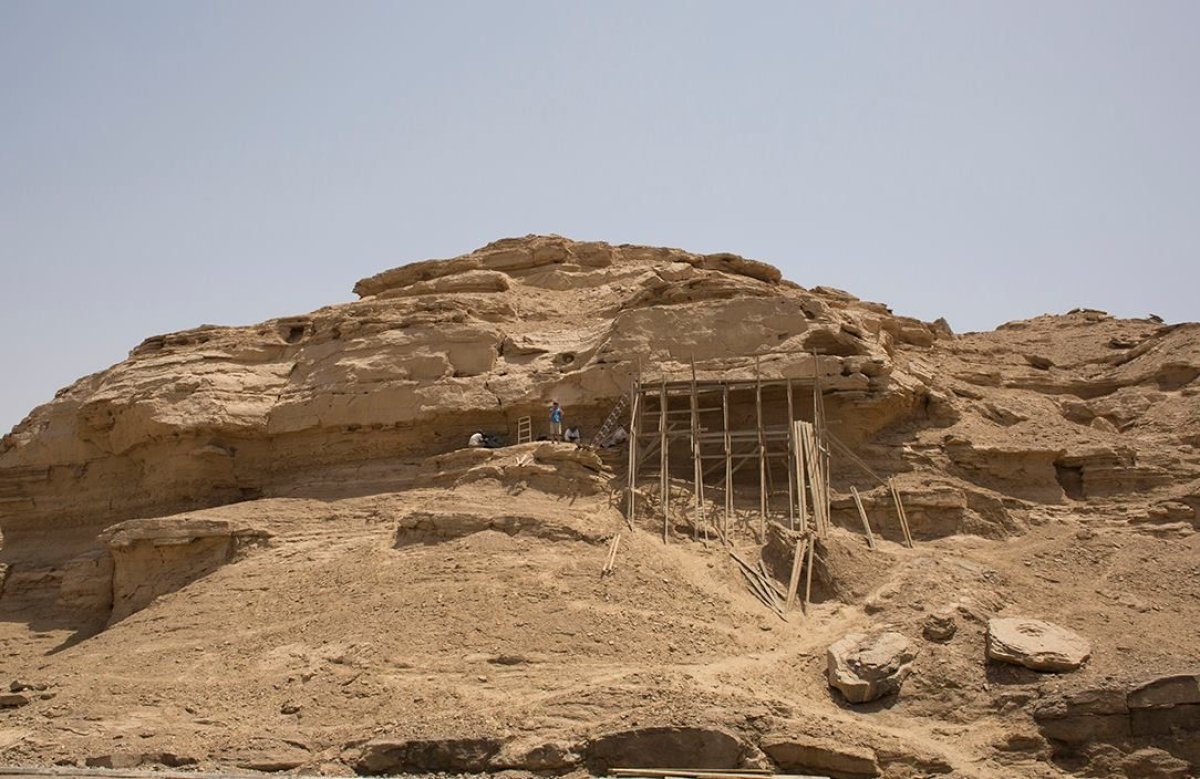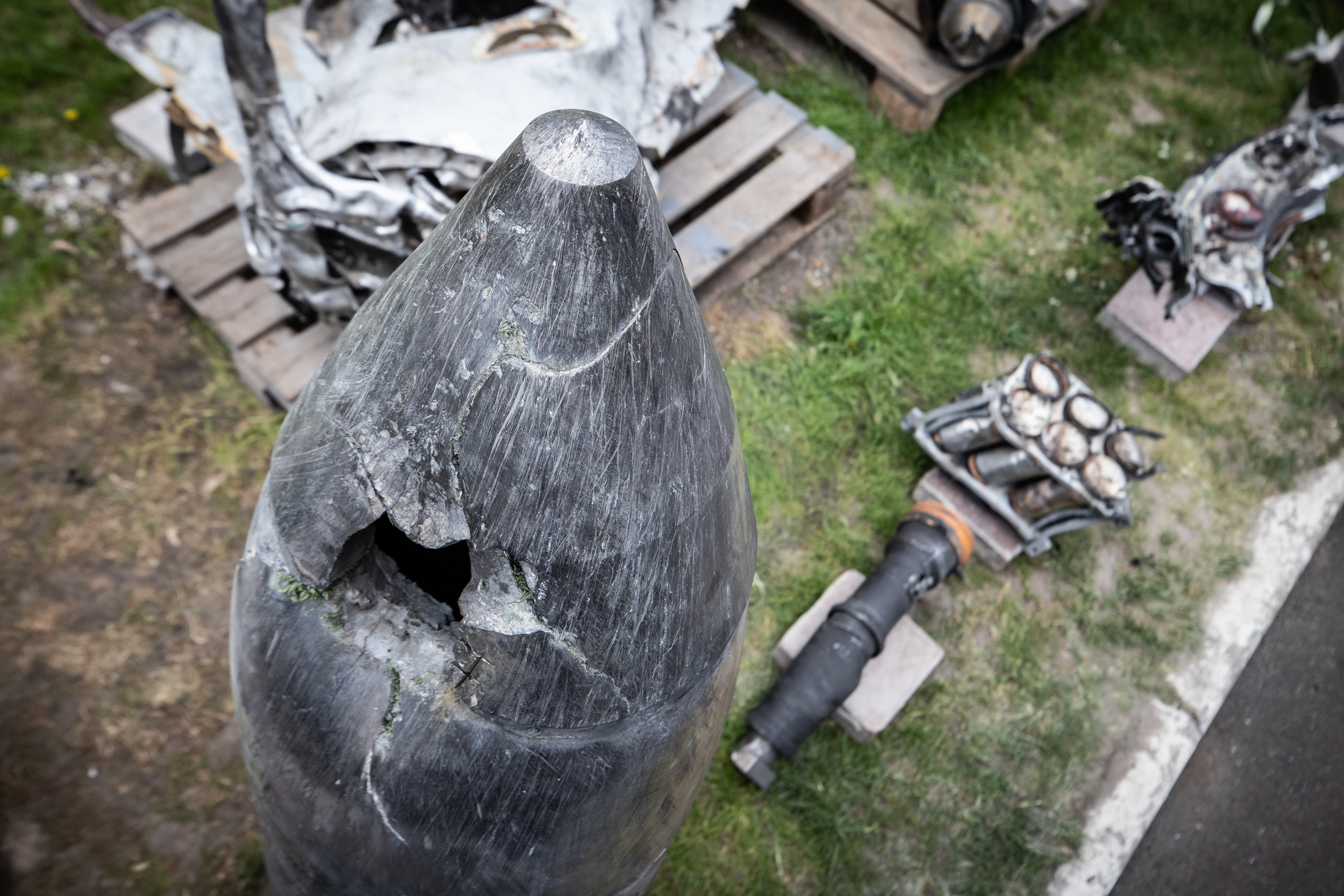
The elegant pictorial writing system of the ancient Egyptians—known as hieroglyphics—has fascinated generations of archeologists. Its precise origins are uncertain. One ancient Egyptian legend holds that the god Thoth handed the gift of writing to a few chosen scribes. A more prosaic modern theory suggests that they derived from rock pictures produced by prehistoric hunting societies wandering the desert.
Now, a new discovery may hold some clues as to how carved images evolved into a formal writing system. According to a Facebook post by the Egyptian Ministry of Antiquities, a new rock inscription site discovered around 60 km south of Luxor in the village of El-Khawy "helps in understanding the development of a system of graphic communication that sets the stage for the appearance of true hieroglyphic writing."
A rock panel displaying four signs, discovered on a joint Yale and Royal Museums of Art and History (Brussels) expedition, features depictions of a bull's head on a short pole followed by two back-to-back saddlebill storks with a bald ibis bird above and between them. Yale University's John Coleman Darnell said in an article on Yale's website that they constitute "some of the earliest—and largest—signs from the formative stages of the hieroglyphic script."
According to the Egyptian antiquities ministry statement, "These symbols are not phonetic writing, but appear to provide the intellectual background for moving from depictions of the natural world to hieroglyphs that wrote the sounds of the ancient Egyptian language."
The inscriptions date back around 5,200 years and each individual sign is about half a meter in height. "This is the first time that anyone has seen them on such a massive scale," Darnell said. He said the team was "absolutely flabbergasted" by the size of the discovery.

According to Yale, they are significant not only for their unique size, but also because they show that even in its very earliest phases, the use of hieroglyphic writing was widespread and not confined to the offices of dusty bureaucrats as some had previously argued.
"This also suggests that there is a much more expansive use of the early writing system than is indicated from other surviving archeological material," Darnell said.
The researchers found the inscriptions in the northern desert landscape of Elkab. This area, along with a city called Hierakonpolis across the river, were extremely important settlements in ancient Egypt, Darnell said.
Uncommon Knowledge
Newsweek is committed to challenging conventional wisdom and finding connections in the search for common ground.
Newsweek is committed to challenging conventional wisdom and finding connections in the search for common ground.
About the writer
Josh is a staff writer covering Europe, including politics, policy, immigration and more.
To read how Newsweek uses AI as a newsroom tool, Click here.








